A bird flu outbreak on a Spanish mink farm has scientists alarmed. The virus could have adapted to mammals and also become dangerous to humans. Factory farming is again in focus.
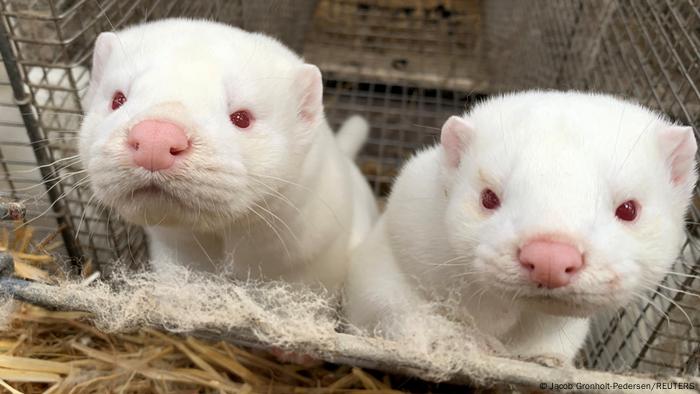
No conoravirus, like at mink 2020 in Denmark – the bird flu virus was rampant in a Spanish mink farm
It started in October last year with several dead mink on a farm in Galicia, north-west Spain. At first, veterinarians believed that the coronavirus was the trigger. However, tests revealed that the highly pathogenic, i.e. highly damaging, bird flu virus H5N1 had led to the deaths. As a result, the more than 50,000 mink on the farm had to be killed. Farm workers themselves were not infected, but the case is causing concern for scientists.
What is special about the outbreak of avian influenza on the mink farm?
Spreading the virus from birds to other species is in itself nothing new. The bird flu pathogen, also known as avian influenza, has been found time and again in mammalian species such as raccoons, foxes or seals – but these were just as isolated cases as the few times people became infected with the virus.
In the cases known to date, the animals or humans were infected via the excrements of infected birds or their carcasses, reports Timm Harder, from the Friedrich Loeffler Institute (FLI), the Federal Research Institute for Animal Health, Deutsche Welle (DW). Harder heads the national reference laboratory for avian influenza, as the avian influenza is scientifically called.
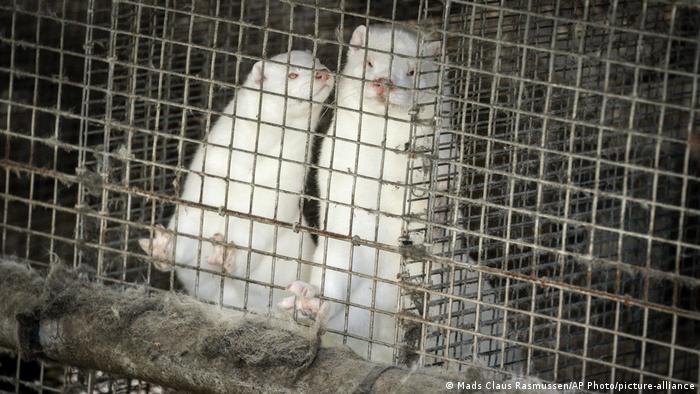
In mink farms, the animals are usually kept close together in cramped cages
“In contrast to these individual infections, in the case of mink the virus was possibly passed on from mink to mink – this is a new quality.” In mink farms, the animals are kept in large numbers in a confined space, which favors the infection process in the very susceptible mammals.
Researchers detected mutations in the pathogen in the mink. “One of them means that the virus can multiply better in mammals,” says Harder. This could be a first adaptation to the mink – and thus to mammals. “This is incredibly worrying,” Tom Peacock, a virologist at Imperial College London, told Science magazine. For him, this is “a clear mechanism for how an H5 pandemic could start”.
Will bird flu become a new human pandemic?
So far, the cases in which people have contracted the H5N1 virus through contact with birds have usually been mild. In December, the European Center for Disease Prevention and Control (ECDC) concluded that the risk of infection with avian influenza virus was low for the general population in the European Union and low to moderate for occupationally exposed individuals.
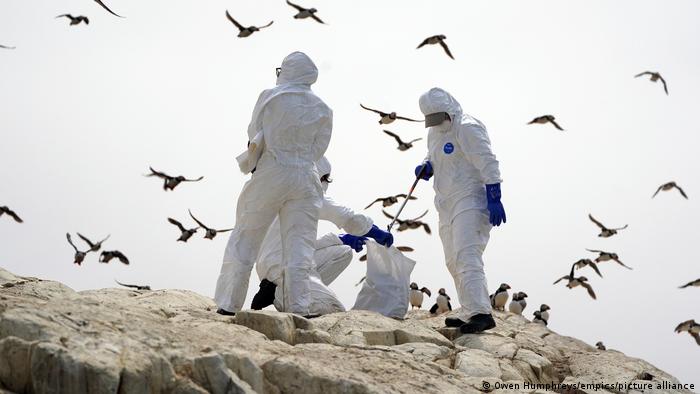
If you're not wearing a hazmat suit, keep your hands off dead birds
According to Timm Harder, some highly pathogenic avian influenza viruses (HPAIV) such as avian influenza have an increased potential to cause new zoonoses. Zoonoses are infectious diseases that can be transmitted from animals to humans and vice versa. But: “There still seem to be numerous hurdles to further adaptation to humans.” However, according to Harder: “The virus that occurred in mink in Spain definitely needs to be examined more closely in order to assess possible adaptations.”
How a harmless virus became a dangerous one
Waterfowl have long been known to be host animals for influenza viruses, says Wolfgang Fiedler, an ornithologist at the Max Planck Institute for Animal Behavior of DW. However, these original influenza viruses were only slightly pathogenic, i.e. less harmful and less contagious. The animals did not get sick at all or only very slightly. “Presumably every mallard duck has had bird flu at some point in its life”.
But if these viruses, which are harmless to wild birds, got into large poultry stocks on livestock farms, according to Fiedler, they would find thousands of similar individuals and spread there very quickly and the virus could mutate with each transmission.
And it did. The result: the highly contagious virus strains H5N1 and H5N8. They likely originated on poultry farms in East Asia, according to the Scientific Working Group on Avian Influenza and Wild Birds established by the United Nations (UN).

In Asia, breeding ducks came into contact with wild birds while grazing on paddy fields and thus probably became infected with the original bird flu virus, which was still quite harmless at the time
There, huge swarms of ducks are kept in nature and driven into rice fields to eat, says Fiedler. There the breeding ducks then encountered wild birds and became infected. Then the mutation process begins. “And if ducks are kept together with pigs – these are forms of husbandry that make such a virus very happy.”
Wild birds or the poultry industry – who is responsible for avian influenza?
According to the UN Working Group on Avian Influenza, outbreaks of highly pathogenic avian influenza are “usually spread through trade in contaminated poultry, poultry products and items that have been in contact with the animals.” Meanwhile, wild birds also played a role in the spread of the disease.
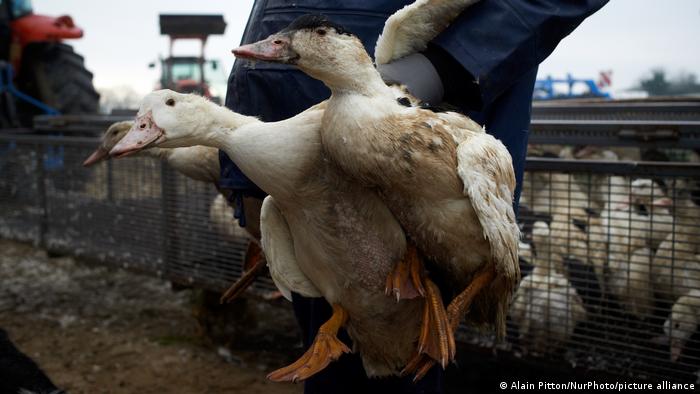
In the large animal populations in poultry farms, this could Bird flu virus spread and mutate rapidly
Because the newly created, now highly contagious virus, i.e. the H5N1 and H5N8 strains, was transmitted to wild birds via infected farm birds, reports Timm Harder from the FLI. The aggressive pathogen is now being transmitted more and more effectively to various wild bird species. The viruses could then be spread over large distances by bird migration.
Ornithologist Fiedler also confirms that there are such cases. But there are other chains of infection that have nothing to do with bird migration. “When a duck is very sick, it doesn't fly long distances anymore.” But then there could be contagion in the vicinity. “For example, when an infected goose or duck is grazing somewhere and someone carries the droppings through their shoes into a poultry farm.”
What damage does bird flu cause?
According to the European Food Safety Authority (EFSA), the ongoing bird flu epidemic is the largest observed in Europe to date. Between October 2021 and September 2022, 50 million farm birds had to be culled in 37 countries. More than 3,800 HPAI virus detections were counted in wild birds. And the number of unreported cases is likely to be a lot higher here.
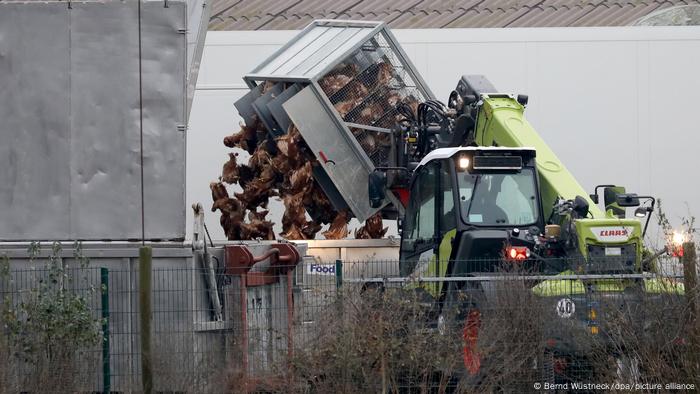
Millions of farm birds, like these laying hens in Germany, died from bird flu or were killed as a precaution to prevent spread
So far, bird flu has mainly occurred in autumn and winter. “Now the virus also circulates in wild birds during the summer months,” reports Timm Harder. But then the animals breed close together in large colonies – ideal conditions for the spread of the virus. Species such as terns, cormorants and northern gannets were particularly badly affected. “The effects of this will only become apparent in the spring and early summer.”
The avian influenza wave reached South America for the first time in the autumn, according to Harder. Peru, Venezuela, but also Ecuador and Colombia are affected. More than 240 dead pelicans were found in Honduras this week alone.
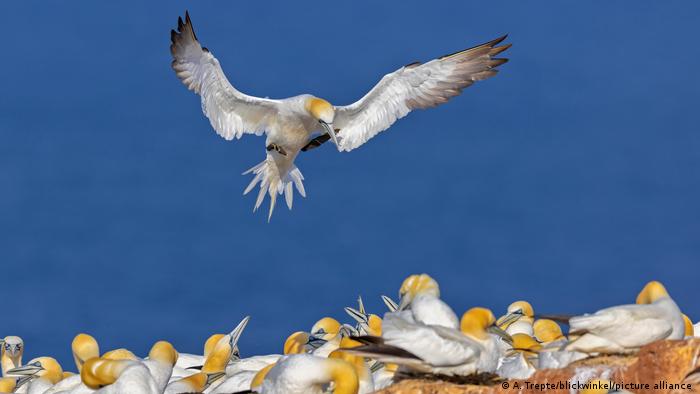
Seabirds such as gannets breed close together, as here on the German island of Helgoland – according to the environmental protection organization WWF, the losses are through the bird flu is enormous
He is concerned, says Harder, that the virus could spread from South America to the Antarctic – then the penguin populations there would be in danger. Aside from Antarctica, Australia is the only one not yet affected by the bird flu pandemic.
What protection is there against bird flu?
As the EFSA writes at the request of DW, the prototype for an early warning system is currently being developed that is intended to predict the risk of HPAI viruses being introduced by wild birds – a EU-wide surveillance network for wild birds. Furthermore, the availability of vaccines against HPAI for poultry and possible vaccination strategies are currently being examined. The results should be available in the second half of the year.
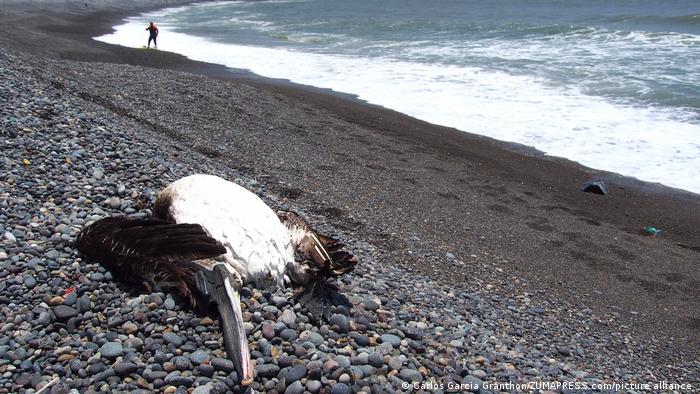
Pelicans are now also dying of avian influenza
Up to now, vaccinations against avian influenza have not been available in the EU permitted. The reason: The vaccinated animals could continue to become infected, but then show hardly any symptoms – there is a risk that an outbreak will not be recognized and the virus will spread even more quickly. In addition, vaccinations often only provide insufficient protection due to the high mutation rate of the virus.
The German Nature Conservation Union (NABU) is therefore calling for the so-called biosecurity for the poultry industry to be increased. “That means: strict hygiene regulations for the staff so that no pathogens are introduced into the company from outside, but also so that no pathogens from the keeping get into the wild,” says Martin Rümmler, speaker for bird protection at Nabu. Poultry should always be kept as far away as possible from nature reserves and the resting places of wild birds.
People should keep as far away from animals as possible, advises ornithologist Fiedler. And do not touch wild animals that have been found dead with your bare hands, adds virologist Harder.
He sees one ray of hope despite the acute pandemic: the extremely wide spread of the virus could boost immunity in wild birds. Antibodies have already been found in living animals. “This is one of the main points on which we base our hope.”

